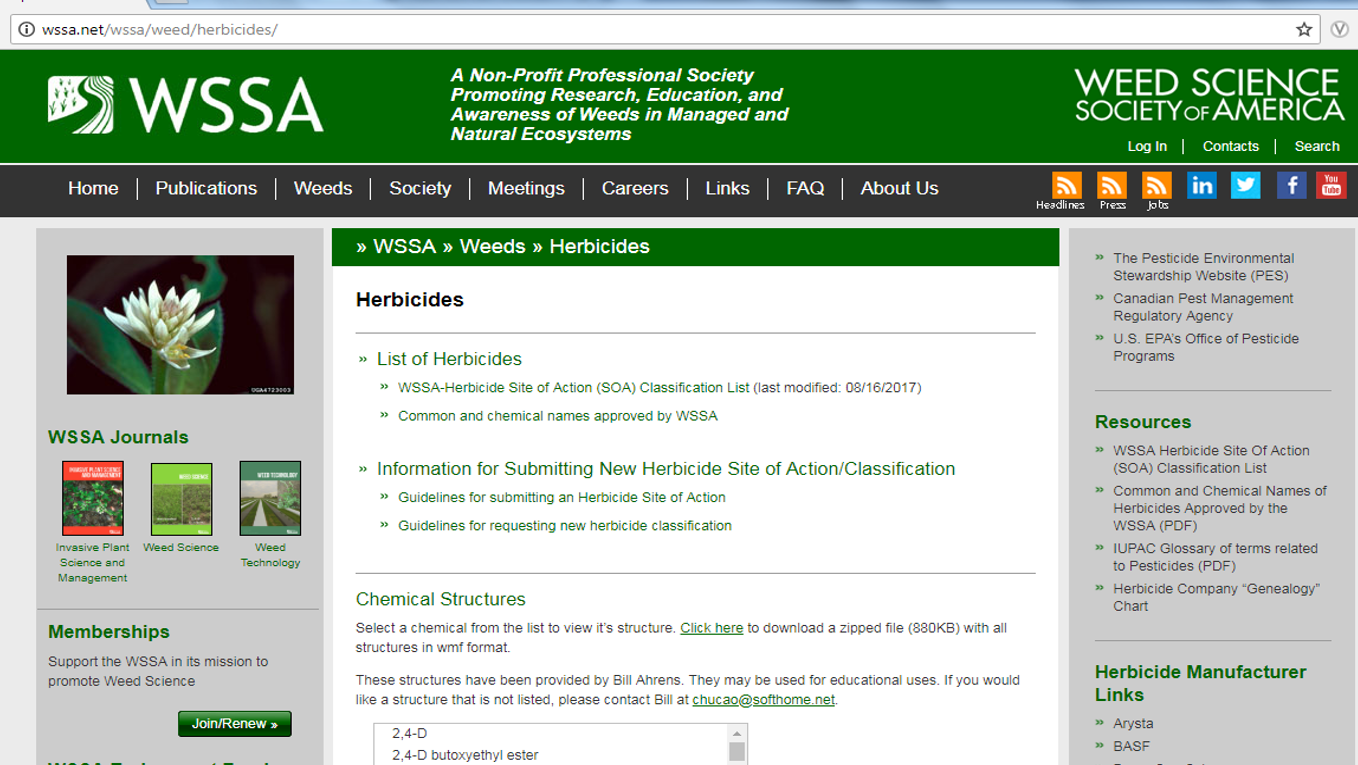Chapter 12: Herbicide Discovery and Classification
12.6 Classifying Herbicides: Terminology
Understanding herbicide classification provides a foundation to also understanding herbicide-plant interactions and how to effectively incorporate herbicide resistance management into a cropping system. In the 1940’s, there were only a few herbicides and it was simple, either you used 2,4-D for broadleaves or you used some non-selective herbicide such as lead arsenate or salt. Today, the list of available herbicides has grown into the hundreds. Not only is the number of herbicides greater, but there are many different herbicides with the same active ingredients that are marketed under different product names. It can make resistance management challenging.
In the 1970’s, when herbicide development exploded, it became apparent that there was a need for a system to keep these products organized. The system was not based on products names but rather focused on how a herbicide acted upon the plant (Mode of Action). Once understood, this system allows for the proper herbicide selection, resistance management strategies and more efficient diagnosing of herbicide injury symptoms.
Today there are 3 classifications based on this idea. In the US the classification system developed by the Weed Science Society of America is widely used. Australia also has a system characterizing herbicides by their mode of action. The third system is used by all other countries and was developed by HRAC (http://hracglobal.com/ ). For herbicides in which their action on plants is known, the 3 systems are in parallel, for example HRAC Group O, Australian Group I, and WSSA Group 4 are synthetic auxins and contain the same list of herbicides (Heap, I, http://weedscience.com/summary/SOADescription.aspx ).

Herbicide Classification Terminology
There are a few terms associated with herbicide classification which you should become familiar with.
First of all, every herbicide has 3 names: a chemical name, common name and trade name. We will follow the herbicide, RoundUp as an example.
- Chemical name
- N-(phosphonomethyl) glycine
- The Common Name describes the chemical name of the active ingredient of the herbicide. The active ingredient is the particular component of an herbicide that is responsible for its activity against the target plant.
- Glyphosate
- The Trade Name is the name under which a product is marketed.
- Roundup + 100’s others
It should be noted that neither the common name, nor the trade name alone, can be used to accurately determine mode or site of action. You will need to acquire more information such as chemical family to make this determination. For a comprehensive list, see the Glossary of Chemical Names and Manufacturers in the Ohio, Indiana and Illinois Weed Control Guide or your local extension resource. The term “mode of action” was referenced several times already, so let us explore that topic further now.